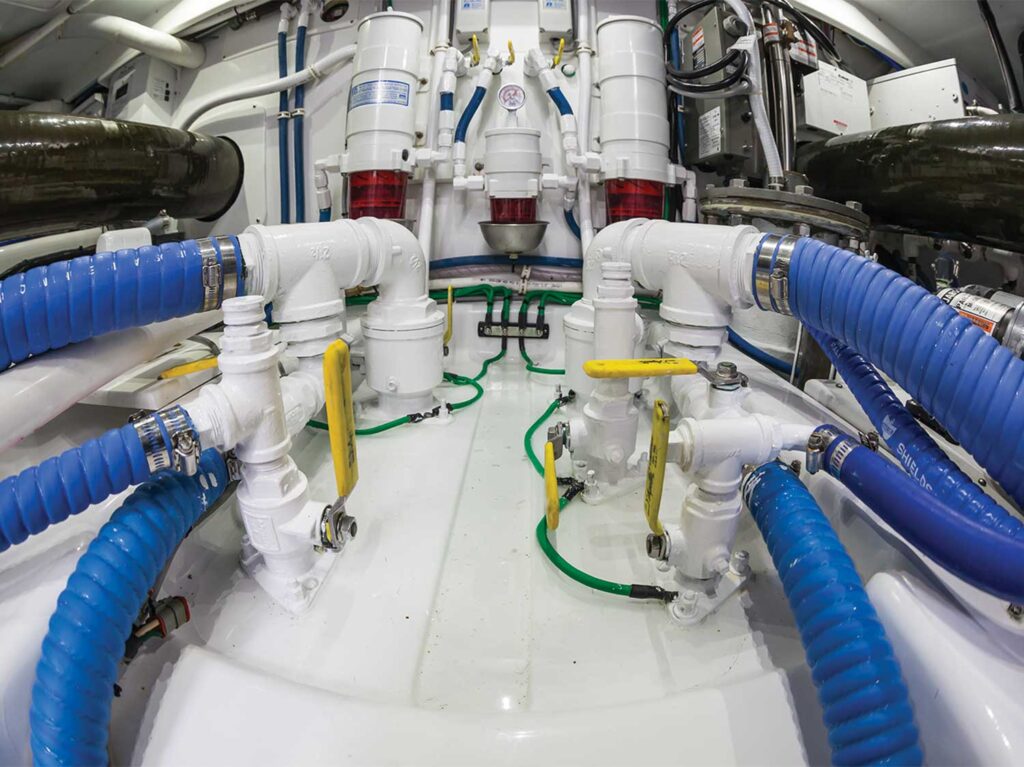
Special delivery: Sign up for the free Marlin email newsletter. Subscribe to Marlin magazine and get a year of highly collectible, keepsake editions – plus access to the digital edition and archives.
Boats in general are built as works of art with a purpose. Whether that objective is fishing, cruising or commercial, there are very few that are not designed to look pretty for what they are. We live in a society where things that are the most aesthetically pleasing get the most attention, and I see a lot of boats getting washed and waxed whether they are being used or not. Everyone wants their boats to stay clean and pretty, but most of all, they want the investment to remain valuable.
Bilge-Rat Status
Yes, I know, crawling around the bilges is no fun, and keeping them clean and perfect is far from a glamorous job, but this is where most boat problems typically begin. Failing to keep up with bilge inspections and cleanings will eventually leave you in some kind of predicament, and trust me, it will be one you certainly do not want.
The bilge is where any water, oil or fuel from an unknown source will end up. The last thing you want—on top of already having an issue of that sort to begin with—is the added stress of narrowing the leak down and having the oil or fuel being pumped overboard. Finding, and ultimately eliminating, leaks is imperative for your vessel to be in perfect working order and also to reduce downtime.
While I recommend checking your bilges every time you step on board, a biweekly inspection should be a minimum throughout the year. Let’s face it, boats are boats, and problems happen overnight, especially when the boat is simply sitting in the slip. If you stay on top of everything, including your bilges, you will save yourself a lot of time, money and headaches in the future, and possibly even avert a catastrophe.
Inspections
You may be asking yourself, “What should I look for during my bilge inspection?” For starters, anything out of the ordinary. Keep an eye out for pooling liquid or fluid of any sort. In a perfect world, our bilges should be bone-dry. But I will admit, on many boats, this seems to be an impossible task. A dry bilge is always a happy bilge, so if you notice fluid of any sort in your bilge, you need to find out where it is coming from, and why. Not only do you want your bilge free of liquids, but also you want it free from any kind of dirt, sand or other particles that do not belong there, because particles such as these can disrupt the operation of your automatic float switches, which can quickly become another disaster all on its own. A clean bilge is often the telltale sign that a boat is in good condition.
During regular inspections, you need to check any wiring that might reside there, especially the connections, to reduce the inevitable corrosion. Fix, clean or replace any connections that look suspect to pending failures. If there are terminal strips in your bilge, be sure to wipe them with a corrosion blocker to keep them repelling water. Be sure all bonding wires are clean, intact and in good shape.
While you are there, you might as well check the through-hull fittings. There should be no leaks or cracks in the hardware. Bedding compounds should also be in good shape. Cracked or peeling compound means you might need to re-bed the fittings in the future, so put it on your yard list for when you haul out and continue to monitor for leaks.
Exercise the valve handles of all seacocks. The handles should open and close easily with some resistance, so opening and closing each valve a few times a week will ensure it’s working properly and that you would be able to shut the valve in an emergency. Spray a corrosion inhibitor onto the through-hull fitting and valve for a little extra protection.
Bilge pumps and float switches should be clear of debris and in good working order. Many bilge pumps have inline check valves in the discharge hose to keep water from coming back into the boat through the pump. This valve will be most evident in boats evacuating bilges below the waterline and pumping water “uphill.” Be sure these check valves are also clean, free of debris and in good working order.
Last but certainly not least, be sure your high-water alarm is in good working order and that the audible sounder is clear and can be heard from several slips away, at a minimum. Every float switch should have a high-water alarm for safety purposes.

Hoses and Clamps
Water hoses often live in the bilge, understandably. Whether it is for a raw-water washdown, the ice-chipper and air-conditioning supply, a watermaker, an engine or generator, or pump feeds, these hoses are also in need of regular inspection. It’s extremely important that these hoses, especially those that require an open through-hull, such as the AC and refrigeration, do not show any signs of rot. A failed hose connected to an open through valve is a sinking waiting to happen.
Most raw-water lines of this nature will also have inline sea strainers, so cleaning the strainers regularly is also a must. A clogged strainer will block the flow to your equipment, causing the unit(s) to overheat and shut down. This is usually indicated by a high-pressure alarm. If your AC or chipper is shutting off on high pressure, all the strainers are likely in need of cleaning.
Pay particular attention to the hose clamps. All your hoses should be double-clamped with zero signs of rust. Solid, stainless-steel marine hose clamps are best because they can withstand saltwater corrosion much better than the ones you get at the hardware store. The last thing you want is salt water spraying around your engine room or your bilge, or, worse yet, a hose blowing off the through-hull and filling your boat with salt water.
Cleaning
I recommend using a good bilge cleaner or degreaser to thoroughly do the job. Beautifully finished and painted bilges will quickly deteriorate and develop unsightly stains if oil or fuel, especially, is allowed to sit and fester. The paint will also hold odors, especially from fuel, which ultimately permeates the cabin, and there’s nothing that kills a deal quicker than an interior that reeks of stale fuel.
A wire brush is good for cleaning up corrosion; just be sure to use only the pressure necessary to address the problem. Too much pressure, and you can either damage the item or break open a paint bubble, which will cause the fitting or pump to peel, making it even more vulnerable.
As long as you stay on top of your scheduled bilge inspections and cleanings, the task is easily tackled and the vast majority of problems can be kept in check. As soon as this important part of vessel maintenance is neglected, it’s only a matter of time before you pay handsomely for it. Take the worry out of a day offshore, and remember, nothing is more important than taking good care of your pricey investment.







